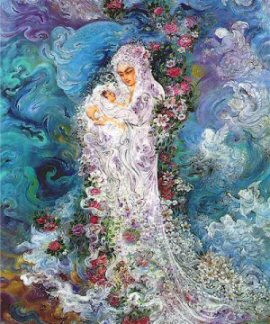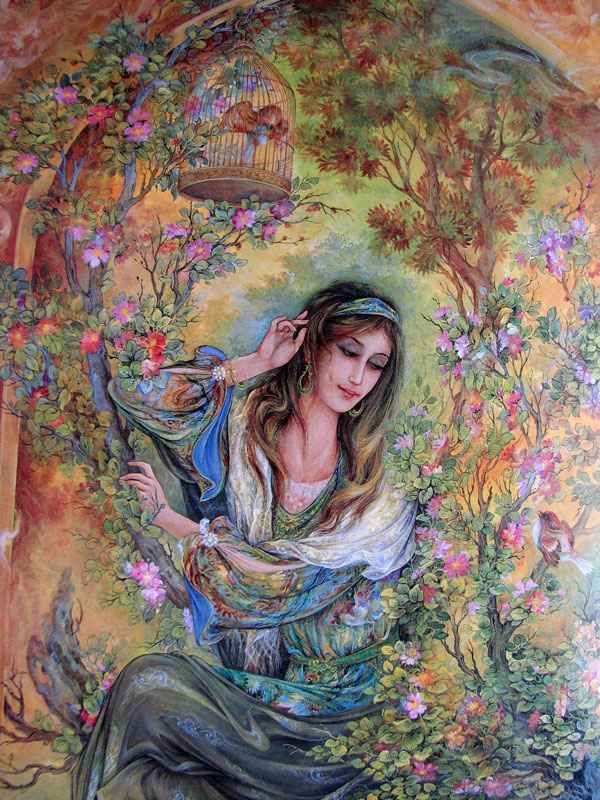Persian painting has several branches. These include the classic art of the Persian miniature, the popular form of “Qahveh Khanehei” painting (Tea-house style painting), and Modern painting in an international style.
A Persian miniature (مینیاتور), as its name suggest, is a small painting on paper. Miniature paintings became a significant Persian genre in the 13th century after receiving Chinese influence after the Mongol conquests. The highest point in the tradition was reached in the 15th and 16th centuries. The tradition continued under Western influence and gained many recognizable modern proponents. The Persian miniature was the dominant influence on other Islamic miniature traditions, particularly the Ottoman miniature in Turkey and the Mughal miniature in the Indian sub-continent. Such a human-centric style of art managed to flourish because Persian art under Islam never completely forbade the human figure. The miniature tradition emphasizes the depiction of figures, often centralizing figures in large numbers.









